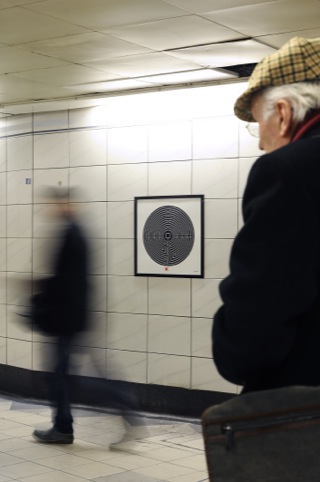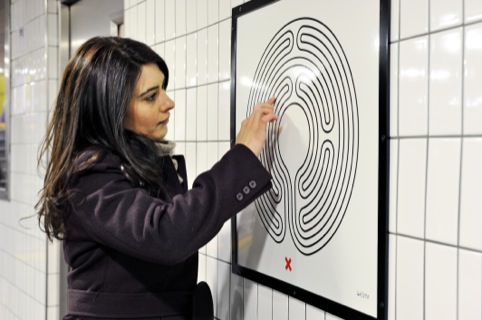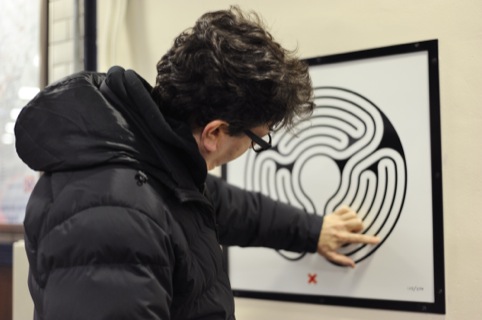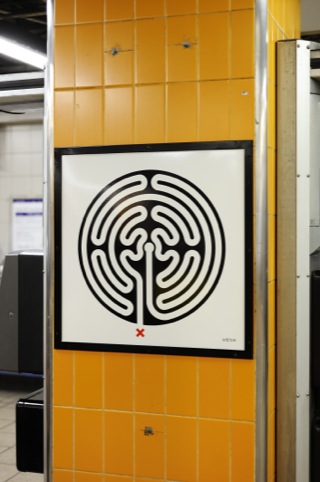Labyrinthine Art on the Underground
Imagine an artist’s canvas that spans 270 individual sites. One which takes – at its very, very fastest – more than 16 hours to view, and which an average of 2.6 million people will see every day.

That was the rather daunting task faced by artist Mark Wallinger, who is in the process of creating the Art on the Underground’s 150th anniversary celebration artwork – or more accurately, art works – Labyrinth.

Wallinger is creating 270 individual pieces, each one to be permanently displayed in each of the underground’s stations. This morning the first of the initial ten works was unveiled at St James’s Park station, with others including Baker Street, King’s Cross St Pancras, Oxford Circus, Westminster and Victoria also on display from today.
The remaining 260 works will gradually be installed across the entire network over the coming months and will all in place by this summer.

While the pieces are not exactly overwhelming – there are no flashing lights, digital interactions or participatory dimensions to them (in my view, no bad thing at all) – there’s a refreshing subtlety to the work; each individual, yet clearly connected to the next, sitting quietly in monochrome with just a red cross of colour across each image.
At a press conference this morning, Wallinger explained that the labyrinth idea was borne of travelling on the tube in rush hour, where hundreds of thousands of bustling bodies form a confusing, sticky mess of people – a maze, yet one in which each person almost always knows exactly where they’re going.

Wallinger says, ‘Each [piece] will act as a mental map, a representation of the orientation and contemplation which are the everyday experience of millions of Londoners and their days spent on the labyrinthine network.’
He adds, ‘I wanted to create something in a language that was comfortable with the tube, and used that same graphic language.’

As such, it’s little surprise that each piece, all displayed on a single 600mm2 vitreous enamel panel, reflects the shape of the iconic London Underground Roundel. In this way, they looked comfortingly familiar – almost as though they’ve been there for years, but we just haven’t noticed in the tortuous tangle of the daily commute.

‘I found it very exciting and close to my heart’, says Wallinger. ‘It stands for a mental space, or something a bit more contemplative.’
The works make sense of the maze, and offer a stillness and opportunity for reflection that a more complex commission would obfuscate.

‘A labyrinth…has an unambiguous route to the centre and back and is not designed to be difficult to navigate’, says Wallinger. Which is surely what every commuter wants.
Images: all works © The Artist, Courtesy Anthony Reynolds Gallery, LondonPhotograph © Thierry Bal 2013
-
Post a comment




